Email Marketing Services
Segment customer lists and personalise email content to build sales and appointments
Personalised email marketing to grow sales and appointments for your business
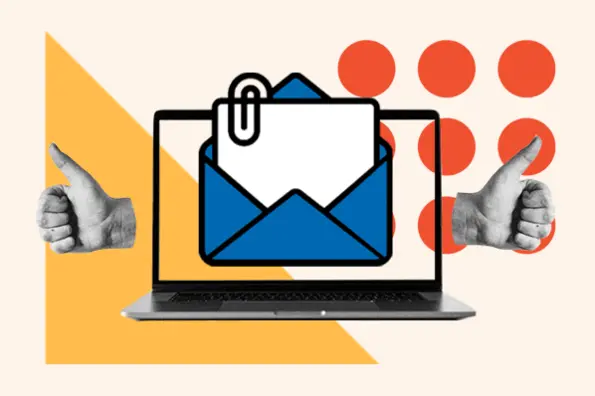
Our email marketing campaigns use these high yielding strategies
Newletters and promotions
Our newsletter campaigns are a powerful way to provide informative updates, news, and relevant content with your subscribers. This can include product releases, special sales and important company announcements.
This is a great way to promote products and services to keep your brand front of mind during the buyers journey.
We can segment your data to reach customers who are likely to engage with your content and get them back onto your website or get them calling you directly.
Rengage customers
Reengaging customers with email marketing is a valuable strategy for businesses looking to reconnect with their audience, revive customer interest, and drive repeat sales. We begin by segmenting your email list based on various factors such as purchase history, engagement level, and demographics. We then craft clever subject lines to capture your subscribers' attention and use personalised, enticing subject lines that drive open rates and traffic back to your product pages.
Abandoned cart automation
Recover potential sales from customers who have added products to their online shopping carts but failed to complete the purchase. Our strategies involves using automated emails or other communication channels to remind and incentivise these potential customers to return and finalise their purchase.
Our campaigns require low-effort automation that yield high results that compliment other digital marketing activity, essentially making your marketing media spend $$ work even harder.
Nurture and awareness campaigns
Our awareness campaigns are designed to engage, educate, and establish long-term connections with your audience. These campaigns serve distinct purposes and often work in tandem to drive success for businesses. We can build successful nurture campaigns that can help build relationships with prospective customers who have shown interest but may not be ready to purchase right away. We aim to keep them informed about your business operations, so when the time is right, your company's offering is on their shortlist.
Ready to grow your business?
Book your free discovery session today and discuss how we can help setup and run your email marketing campaigns

Email marketing for eCommerce
Email marketing is a cornerstone of successful ecommerce strategies. We offer an efficient and personalised way to reach your exisiting customers, nurture relationships, and drive sales.
We can effectively promote products, sales, and special offers through email campaigns. These emails can create a sense of urgency and entice customers with exclusive discounts or early access to sales events.
By nurturing customer relationships and encouraging repeat business, we can help you stay in touch with your customers and keep them informed about new products and maintain their loyalty over time.
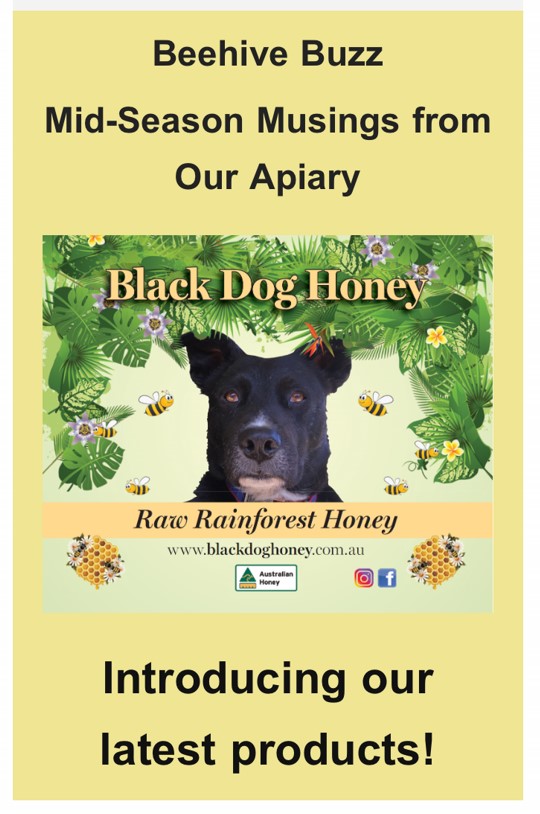
Email marketing for trades & services
Email marketing for trades and services industries helps businesses connect with customers easily and effectively.
Whether you’re a handyman, plumber, electrician or landscaping company email marketing allows you to keep your customer base informed about promotions, new services and seasonal maintenance reminders.
By sending relevant content to your customers’ inboxes builds loyalty, trust and important brand recognition reminders. This approach keeps tradespeople and service providers top of mind.
This ultimately leads to increased customer retention and business growth.
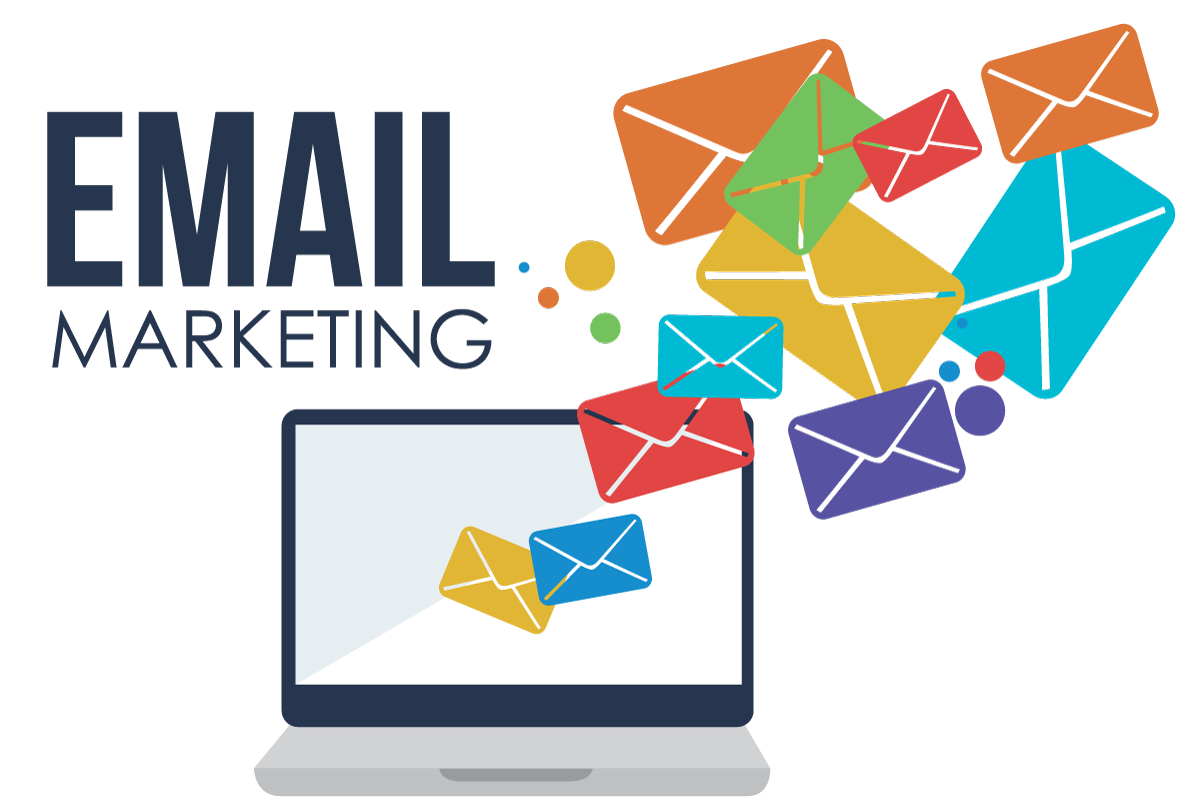
What clients say about us





Tailored to suit businesses of all sizes
Our Email Campaigns
built for different purposes
View our packages below and select the right plan that suits your business.
eCommerce growth
-
5x email template creation
-
List segmentation
-
Email platform setup and configuration
-
Shopping cart abandonment (always on)
-
Customer re-engagement
-
5x copywriting for emails
-
Newsletters and promotions
-
Campaign reporting
-
Strategy and development
-
This program is a one-off cost. Additional email sends @ $299 per campaign.
Small business success
-
2x email template creation
-
List segmentation
-
Email platform setup and configuration
-
2x copywriting for emails
-
Newsletters and promotions
-
Email nurture automation (always on)
-
Campaign reporting
-
Strategy and development
-
This program is a one-off cost. Additional email sends @ $299 per campaign.
Brands we work with








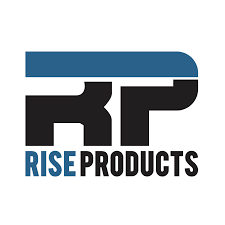
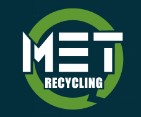



We share our knowledge & digital marketing expertise
Our value proposition is simple – We provide ideas to our clients for free.
It’s up to them if they want to do it themselves or hire us to do it if they don’t have the time, resources or technical skills This honest approach is what sets us apart from the rest of the marketing agencies who tend to keep their cards close.
You will also get constant strategic counsel and tactical marketing skills from someone who has done this for 12+ years working for SMBs, Large Enterprises, Start-ups and eCommerce companies of all shapes and sizes.
What you get from us:
- Full support during Australian Business hours
- Wealth of knowledge from industry leading marketing pros
- Conversion rate optimisation
- Ideas to improve your marketing operations
- Advice on building integrated marketing plans
All our email marketing plans come with:
- Newsletter template creation, optimised for mobile devices
- Copywriting
- List segmentation
- Frequent reporting and analysis
- Newsletters and promotions
- Email platform setup and configutation
Our digital marketing guides & industry updates

How to Make a Marketing Lead Magnet for Tradespeople
In the realm of marketing for tradespeople such as plumbers, electricians, carpenters and other skilled professionals generating top notch leads is essential for business expansion.

How to improve your Core Web Vitals and enhance your SEO
Learn how to enhance your website’s performance by optimizing Core Web Vitals. Discover essential tips to improve your Largest Contentful Paint (LCP), First Input Delay (FID), and Cumulative Layout Shift (CLS) for better SEO rankings, a smoother user experience, and higher conversion rates. Prioritize these metrics to meet Google’s standards, boost your site’s speed, and create a more engaging browsing experience that keeps visitors coming back.

How to improve your click-through rate on Google Ads
Learn how to improve your click-through rate on Google Ads with expert tips on crafting compelling ad copy. Discover strategies for identifying your target audience, highlighting unique selling points, using action-oriented language, and leveraging emotional triggers.
Contact us to find out how we
can help your business grow

Frequently asked questions about email marketing campaigns
Why is email marketing important?
Email marketing holds importance for reasons and continues to serve as a valuable and effective tool, for businesses and marketers. Lets explore some factors that make email marketing crucial;
Email offers an personalised channel of communication between businesses and their target audience. It allows you to connect with individuals in their inbox, which’s a space they regularly check.
Compared to marketing channels email marketing proves to be cost effective. It doesn’t require investments in printing, postage or advertising space. With the tools you can send emails at a relatively low cost.
Email also allows for messaging capabilities. Businesses have the ability to segment their email lists based on demographics, behaviors or preferences enabling them to deliver personalised and relevant content to groups.
Email marketing platforms provide automation features that allow campaigns to be triggered based on user behavior or specific events. This empowers businesses to deliver personalised messages thereby enhancing the user experience.
When executed effectively email marketing often yields a return on investment (ROI). It has the potential to drive sales, nurture. Foster brand loyalty, among recipients.
The cost effectiveness and potential impact make it a worthwhile investment.
Staying in touch with your audience through email is a way, to relationships maintain brand awareness and encourage repeat business.
Email marketing platforms offer analytics that allow businesses to track the performance of their campaigns. Key metrics like rates click through rates and conversion rates provide insights into what works and where improvements can be made.
Email marketing enables businesses to instantly connect with an audience whether they are local, national or international. It provides a means of communication across borders.
Email campaigns have proven to be highly effective in driving conversions. Whether you’re promoting products, services or special offers crafted emails can motivate recipients to take actions such as making a purchase or completing a form.
Consistent email communication plays a role, in building and reinforcing brand awareness. By maintaining messaging and branding in your emails you contribute to the development of a brand identity.
In todays world where smartphones and other mobile devices are widely used emails can be easily accessed anytime and anywhere. The flexibility offered by email marketing increases the likelihood of your messages being read.
Email marketing relies on recipients who have willingly opted in to receive messages. This approach, based on permission often results in engagement and a receptive audience.
Emails provide a platform for delivering content. Whether its through newsletters, tutorials or exclusive material businesses can establish themselves as industry experts.
Email campaigns can be seamlessly integrated with social media strategies expanding the reach of your content and encouraging engagement, across channels.
In conclusion email marketing is an powerful tool that enables communication drives engagement and contributes to the overall success of a marketing strategy. When executed strategically and focused on providing value to the audience email marketing becomes an element of a digital marketing plan.
I don't have an email list, so how do I build an email list?
Building an email list is, like tending to a garden; it requires some time and attention. The rewards can be amazing. Here’s a simple plan to help you kickstart your email list;
Attract them with Goodies;
Have you ever been enticed by a freebie? Well your future subscribers will be too. Create something like a VIP club where people can subscribe to get discounts and freebies from time to time. If you offer something they would benefit from, people would gladly provide their email address for free.
Enhance Your Website;
Your website serves as the porch of your home. Add a sign up form there – make it inviting and easily noticeable. Pop ups or friendly reminders can work wonders. Don’t over do it though, popups can affect UX and be a tad annoying
Spread the Word on Social Media
Let your social media friends know that you’re hosting an email party! Share your magnets tell them what they’ll gain from it and include the link to your sign up form. It’s as easy, as pie.
Organise a Contest;
Everybody loves a contest don’t they? Create a giveaway. Contest and encourage people to share their email addresses for a chance to win. It’s a win win situation!
Impress with Webinars
Want to showcase your expertise? Why not host a webinar or a virtual event? People love learning. They’ll happily share their email addresses to secure a front row seat.
Grab the attention of those who’re about to leave! Utilise exit intent pop ups that gently urge them to stay. It’s, like saying, “Hold on don’t go ! Want to be email buddies?”
Create a landing page that acts as an entrance to your email club. Make it enticing use language and watch the sign ups pour in.
Ever heard of QR codes? You can include them in your materials like business cards or posters. They serve as handshakes for people who want to join your email community.
Give Facebook Lead Ads a try – they work like RSVP cards for your email party. People can sign up without having to leave the Facebook dance floor.
Here’s a sneaky but effective approach; add your sign up link to your email signature. Every email you send becomes an opportunity for others to join your growing tribe of subscribers.
Why not team up with influencers? Collaborating with influencers can help spread the word and bring people right, to your doorstep.
Create a quiz that requires an email address to reveal the results. It’s a win win situation. Enjoyable, for participants. You get to collect emails!
Don’t forget about users! Ensure that your website and forms are visually appealing and user friendly on devices well.
Make signing up an experience. Add elements like spin to win wheels or interactive quizzes to make the process more entertaining and increase sign up rates.
Make your audience feel special by offering access or sneak peeks to those who join your email list. It’s, like being part of a club!
Remember, building a fantastic email list takes time and effort. Just keep going stay genuine and before you know it you’ll have an email community of your own!
What is a good email marketing open rate?
A good email open rate is like asking whats considered a good try average in Rugby. It can vary… Generally speaking, when it comes to emails a decent open rate falls between 15% and 25%.
Now if we talk about the big leagues they might see rates of 30% or even higher.. Don’t worry if you’re not there yet. It really depends on your audience and industry. What truly matters is how engaged your subscribers are. If they’re opening your emails reading the content inside and clicking on links then you’re definitely on the track!
Just remember to keep testing things out making adjustments as needed and delivering content to your audience. With time and effort your open rates will scoring tries.
In terms of email marketing rates what’s considered ideal can vary depending on factors such as the industry you’re in the type of emails you send out and the specific audience you’re targeting. However here are some general guidelines;
Open Rate; Typically falls within the range of 15% to 25% which is considered average for industries.
Above Average; If your open rate exceeds 25% thats seen as above average. Indicates a level of engagement, with your audience.
Successful; Open rates that surpass 30% or even reach high as 40% are exceptional and suggest highly successful email campaigns.
It’s important to understand that benchmarks can vary depending on the industry. For example industries, with audiences may regularly experience open rates that surpass the average while those, with less engaged audiences may fall below.
The key is to establish a starting point consistently monitor your rates and focus on enhancing engagement by delivering content personalized messages and strategic timing. Remember, open rates are one measure – it’s equally important to analyse click through rates, conversions and other relevant metrics to assess the success of your email campaigns.
What is shopping cart abandonment emails?
Shopping cart abandonment emails are an email marketing tactic that aims to reconnect with users who have added items, to their shopping cart but haven’t completed their purchase. When a potential customer adds products to their cart but leaves the website without finalising the transaction its referred to as cart abandonment.
The purpose of shopping cart abandonment emails is to nudge and persuade these users to return and complete their purchase. Here’s a breakdown of how they operate;
1. Trigger Point
The initial step involves identifying when a cart has been abandoned. This trigger point is usually set up on an e commerce platform, which detects when a user has added items to their cart but hasn’t proceeded to checkout.
2. Email Automation
Once the trigger is activated an automated email is sent out to the user. This email is usually dispatched within a timeframe after the abandonment occurs, within hours or days.
3. Personalised Content
Shopping cart abandonment emails frequently incorporate personalised content, such as images and details of the abandoned products. The aim here is to jog the users memory, about what they left
4. Incentivised offers
In order to encourage users to complete their purchases these emails often include deals, discounts or attractive offers. This could be anything, from shipping and a percentage off the purchase to time limited promotions.
5. Clear Call to Actions Having CTAs in the email guiding users back to their shopping cart or the website to finalise their purchase, will help recover lost sales.
Considering that people access their emails through devices shopping cart abandonment emails are typically designed to be mobile friendly and adaptable across screens.
In cases a series of follow up emails may be sent if the user doesn’t respond to the cart abandonment email. These subsequent emails might emphasize urgency. Provide incentives.
Good Marketers (like Flow Digital) carefully analyee the performance of these emails by examining metrics such as rates, click through rates and conversion rates. This data aids in refining. Optimising the strategy, for cart abandonment emails.
The main objective of emails, about abandoned shopping carts is to recover sales that might have been lost by reconnecting with users who showed interest, in products but didn’t finish the checkout process. These emails use customized content and persuasive strategies to motivate users to come to the website and complete their purchase.
How can I avoid emails being marked as spam?
There is nothing worse than putting an immense amount of effort into an email marketing campaign only to find that it landed in a spam bin.
To avoid that, we suggest doing the following
1. Practice Permission Based Marketing
Ensure that you only send emails to people who have explicitly given their consent to receive communication from you. Avoid reaching out to contacts, from purchased lists or individuals who haven’t explicitly opted in.
2. Choose a Reliable Email Service Provider (ESP)
Select an ESP with a reputation and track record. Established ESPs typically have measures in place to ensure your emails are delivered successfully and prevent them from being flagged as spam.
3. Verify the Authenticity of Your Emails
Implement authentication protocols such as SPF, DKIM and DMARC to validate the legitimacy of your emails. This helps email providers recognize your messages as genuine and trustworthy.
4. Add a Touch to Your Emails
Make your emails more personal by addressing recipients by their names and tailoring the content based on their preferences. Personalized emails are less likely to end up in spam folders.
5. Offer a Clear Unsubscribe Option
Include an link for recipients to unsubscribe from your emails if they choose to do so. This not ensures compliance with regulations. Also builds trust and reduces the likelihood of recipients reporting your messages, as spam.
6. Use Honest and Clear Subject Lines;
Craft lines that accurately represent the content of your emails. Avoid using lines as they can result in spam reports.
Find the balance between text and images in your emails to maintain a ratio. Emails that have images might trigger spam filters.
It’s best to avoid capitalisation or punctuation in your lines and email content as these can raise suspicions for spam filters.
Make sure to clean up your email list by removing bouncing email addresses. Having a bounce rate can harm your sender reputation.
Keep an eye on metrics such as rates, click through rates and unsubscribe rates. If these metrics are low it may indicate that your recipients don’t want your emails.
To improve engagement and reduce the chances of being marked as spam consider segmenting your email list based on user preferences and behavior. Sending targeted and relevant content is key.
Remember to include your mailing address in your emails not because it may be a legal requirement in some places but also because it adds transparency and credibility.
Be cautious with URL shorteners as they are often associated with spammers although they can be useful, at times.
Here are some additional tips to improve your email deliverability and prevent your emails from being flagged as spam;
- Avoid use of elements especially within the body of your emails.
- Test your emails before sending them out to an audience. Run tests, with email providers to identify any triggers that could mark your emails as spam. This way you can address these issues beforehand. Ensure deliverability.
- Stay informed about email marketing regulations such, as the CAN SPAM Act and GDPR. It’s important to comply with these laws to maintain a sender reputation.
By following these technical strategies you can enhance the effectiveness of your email campaigns and reduce the risk of them ending up in spam folders.
How can I personalise email content?
When it comes to personalising email content the key is to create an tailored experience, for each recipient. Here’s a narrative approach that can help you achieve this;
Imagine you’re writing an email not as a message to your whole audience but as a one on one conversation with every individual. Start by addressing them by their name. It may seem like a detail. It adds a personal touch and makes them feel like you’re speaking directly to them.
Now consider the segments within your audience. Are there characteristics or behaviors that group them together? Some may be customers who frequently shop with you while others might be new to your brand. Treat these segments as individuals with their unique interests.
As you compose your email make sure the content resonates with each segment. For your customers acknowledge their continued support. Perhaps offer them an exclusive discount, as a token of appreciation. For those who have recently joined extend a welcome. Introduce them to your best selling products or most popular content.
Take into account the interactions that recipients have had with your brand. If someone consistently clicks on links related to a category consider sending them relevant content or offers in that particular area.
If your customers have recently made purchases it would be beneficial to suggest products or provide updates on items that might catch their interest.
Consider incorporating dynamic content blocks that adapt according to the preferences or behaviors of the recipients. Show them products or information that align with their expressed interest giving them a engaging experience.
Remember to acknowledge occasions well. If you have access, to their birthdays or anniversaries it’s nice to recognise these milestones in your emails. A simple birthday greeting or an anniversary discount adds a touch. Strengthens your connection with the recipient.
Furthermore it’s important to encourage two way communication. Ask for feedback, opinions or preferences from your customers. This not makes them feel valued but also provides insights that can guide your future personalisation efforts.
In essence personalising email content is like having a conversation tailored specifically to each individual you are communicating with. It’s all, about creating a sense of recognition and making your recipients feel seen understood and appreciated.
What is the best time to send marketing emails?
Determining the time to send marketing emails is akin, to catching the wave – it relies on your location and the company you keep. Take a moment to consider your audience; are they risers who check their emails while sipping their morning coffee or do they prefer a midday breather? It’s also essential to factor in time zones; all you wouldn’t want your email popping up in someones inbox at 3 AM.
Midweek, Tuesday through Thursday tends to hit the spot as a generic guide. By then the chaos of Monday has gone and anticipation for the weekend is building up. So it’s best to steer of Mondays rush and Fridays winding down when inboxes tend to overflow.
If your target audience spans across time zones it becomes akin to conducting an orchestra. Consider segmenting your email list based on regions and ensure that each area receives messages during its hours. This thoughtful approach guarantees that your communication arrives at a time when it’s most likely to be noticed.
Also, many individuals habitually check their emails on their smartphones during moments, in the evenings or weekends. So perhaps reserve any email blasts for times when people are more inclined to leisurely scroll through their handheld devices.
Lastly remember that seasonal factors play a role too. Holidays and special events can disrupt patterns influencing engagement levels with emails.
Flexibility is crucial. Pay attention to the changing patterns of your audiences behavior. Adapt your email scheduling accordingly. It’s similar, to dancing; you need to synchronise with the rhythm of your audience to ensure that your message is effectively communicated.
What makes a successful email marketing campaign?
To run an email marketing campaign it’s crucial, to plan execute strategically and continuously optimise. Here are the key factors that contribute to the effectiveness of an email marketing campaign;
1. Setting Clear Objectives;
Clearly define goals for your campaign. Whether its driving sales increasing brand awareness or promoting an event having defined objectives will guide your strategy.
2. Targeting the Right Audience;
Segment your email list based on demographics, behaviors or preferences. Tailoring your messages to segments will enhance their relevance and engagement levels.
3. Creating Quality Content;
Develop relevant content for your emails. Use language, captivating visuals and a clear call to action (CTA) that motivates recipients to take the desired action.
4. Designing Responsively;
Ensure that your emails are mobile friendly and visually appealing across devices since a significant number of users open emails on devices nowadays.
5. Personalising Your Messages;
Customise your emails by addressing recipients by their names and utilizing data to deliver targeted content. Personalisation fosters. Helps establish a connection with your audience.
6. Optimising Timing and Frequency;
Experiment with days and times to determine when your audience is most responsive, to receiving emails from you. However be cautious not to inundate them with email communication.
By considering these elements in your email marketing campaign strategy you can increase its chances of success while maintaining a touch throughout the process.
A/B Testing;
Perform A/B tests on elements, like subject lines, images, CTAs. Send timings. Analyzing the outcomes helps you understand what resonates best with your audience and refine your approach.
Clear and Captivating Subject Lines;
The subject line is the first thing recipients see. Make it easy to understand, brief and captivating to encourage opens. Avoid using lines as they can lead to decreased trust.
7. Optimised Landing Pages
Make sure that the landing pages your emails direct to are relevant, optimized and aligned with your campaign objectives. A smooth transition from email to landing page enhances the user experience.
8. Permission based Marketing;
Only send emails to individuals who have willingly subscribed to receive them. Respect. Comply with spam regulations like GDPR or CAN SPAM.
Analytics and Tracking;
Utilise analytics to monitor the performance of your campaigns. Keep an eye on metrics such as rates, click through rates, conversion rates and unsubscribe rates.
Analysing this data provides insights for improvement.
Engagement and Relationship Building;
Develop a long term relationship, with your audience. Engage with them through content, newsletters and exclusive offers. Remember, establishing trust leads to customer loyalty.
Comply with the regulations like GDPR or CAN SPAM to ensure that your email campaigns are in line with requirements. Make sure to include options for opting out and promptly honor any requests you receive.
It’s important to seek feedback from your audience and use it to enhance your campaigns. Continuously improving is crucial, for achieving long term success.
By considering these aspects and adjusting your approach based on performance metrics you can create email marketing campaigns that effectively connect with and captivate your target audience.

